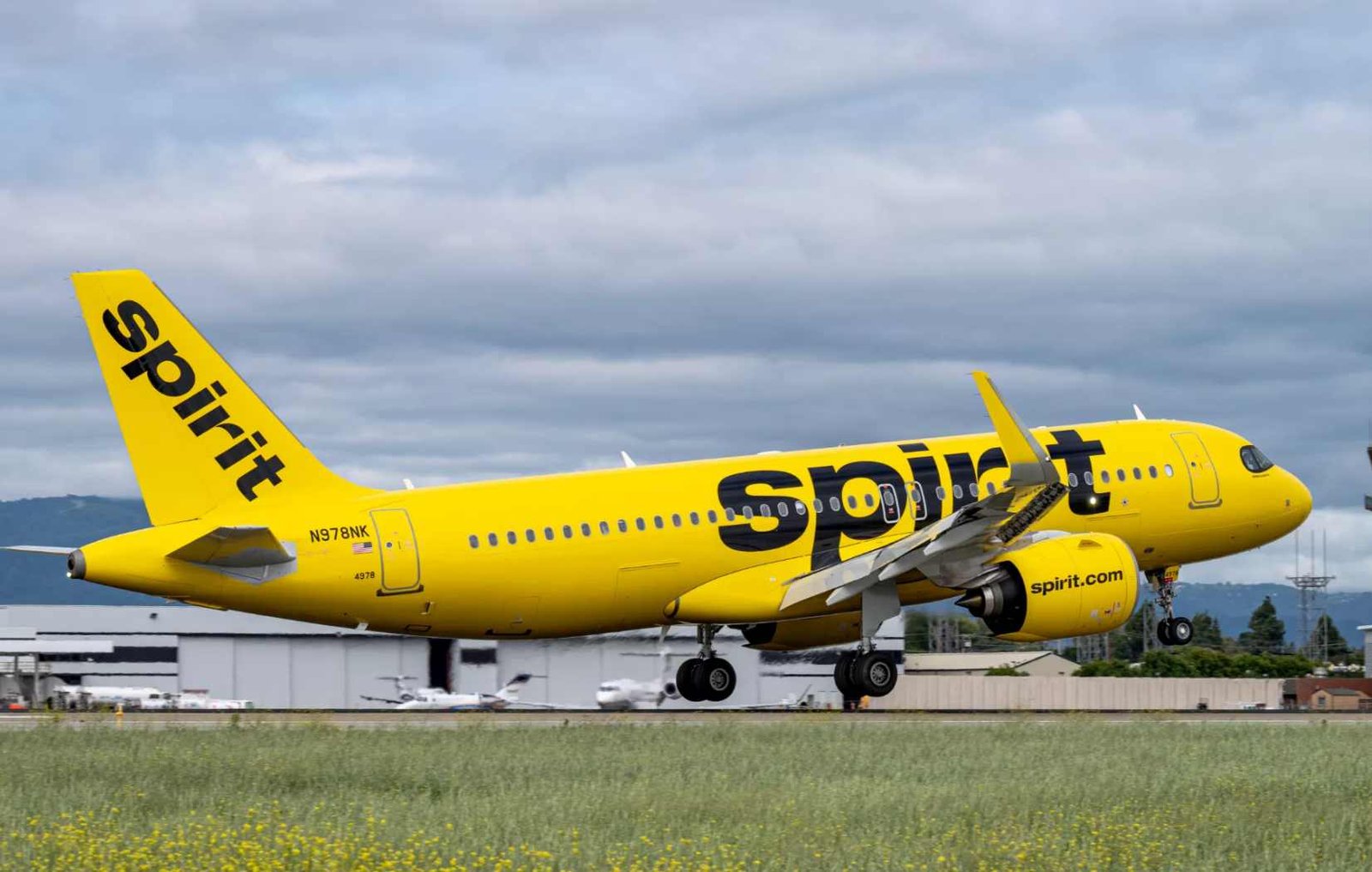Highlights
- Spirit Airlines files for Chapter 11 bankruptcy amid $9 billion in debt.
- Operations, including ticket sales and flights, remain unaffected.
- Blocked JetBlue merger and engine issues worsened financial struggles.
- $300 million financing secured to sustain operations during restructuring.
- Cost-cutting measures include selling planes and introducing premium bundles.
Spirit Airlines, the budget carrier known for its low-cost, no-frills service, filed for Chapter 11 bankruptcy protection on Monday.
The airline, burdened by nearly $9 billion in debt, has faced a series of setbacks, including a blocked merger with JetBlue Airways and operational challenges stemming from engine issues.
Despite these troubles, Spirit assured customers that flights, ticket sales, and loyalty programs will continue uninterrupted during the restructuring process.
Ted Christie, the airline’s CEO, highlighted the company’s commitment to customers and its recovery plan. “You can continue to book and fly now and in the future,” Christie said in a letter to customers, expressing confidence in Spirit’s long-term viability.
$300 Million Lifeline Secured
As part of the bankruptcy filing, Spirit Airlines announced a prearranged agreement with bondholders to restructure its finances.
The deal includes $300 million in new financing to sustain operations and a $350 million equity commitment, effectively converting $795 million of debt into equity. The company aims to exit bankruptcy by the first quarter of 2025.
While Spirit has struggled to return to profitability since 2019, the restructuring provides an opportunity to address its debt and position itself for long-term success.
History of Financial Struggles
Spirit Airlines has experienced turbulent times over the past few years. In January 2024, a federal judge blocked its proposed $3.8 billion merger with JetBlue, citing concerns over reduced competition and higher consumer ticket prices.
The decision left Spirit without a critical financial lifeline, forcing the airline to explore alternative solutions.
Adding to its woes, engine issues with its Airbus A320 fleet grounded nearly 10% of its planes this year. Spirit expects as many as 67 planes to be out of service by early 2025, further straining its operations.
The airline has said it will receive $150 million to $200 million in compensation from engine manufacturer Pratt & Whitney.
Industry Challenges
Spirit’s ultra-low-cost business model revolutionized air travel, offering bare-bones fares that appealed to cost-conscious travelers. However, the approach also made the airline a frequent target of criticism for its lack of amenities and customer service.
Competitors soon adopted similar pricing strategies, introducing basic economy fares that matched Spirit’s low prices but came with additional perks, intensifying competition.
The post-pandemic recovery has been uneven across the airline industry. While major carriers such as Delta, United, and American Airlines have benefited from surging demand for international and premium travel, low-cost airlines like Spirit have struggled.
A glut of seats on domestic routes, coupled with rising costs, has squeezed profits for budget carriers.
“Our larger, higher-cost brethren have introduced products and services that mirror what we currently offer,” Christie told investors in August, underscoring the challenges Spirit faces.
Cost-Cutting Measures
In response to financial pressures, Spirit has undertaken aggressive cost-cutting measures. Last month, the airline sold 23 older planes and announced plans to sell more, saving an estimated $80 million. Spirit has also deferred $1.1 billion in debt payments to 2025 and furloughed some pilots.
The airline has introduced new premium service bundles to attract a broader customer base.
These bundles include perks like extra legroom, priority boarding, refreshments, and waived baggage fees—an attempt to generate additional revenue and appeal to travelers seeking a more comfortable flying experience.
A Legacy of Disruption
Founded as a trucking company in 1964, Spirit entered the airline industry in 1990 and became a trailblazer in the budget travel space under the leadership of former CEO Ben Baldanza.
Known for its “bare fare” model, Spirit reshaped the U.S. aviation market by forcing competitors to lower prices in markets it entered. Despite its polarizing reputation, the airline developed a loyal following among budget-conscious travelers.
Today, Spirit remains a significant force in the industry, even as it faces steep challenges. The bankruptcy process, while daunting, has been successfully navigated by other airlines, including Delta and United, in the past.
Despite its financial struggles, Spirit is optimistic about its future. The airline’s bankruptcy filing is intended to provide breathing room to reorganize its operations and emerge stronger.
The company has assured customers that all flights, tickets, and loyalty points will remain valid during the process.
While Spirit Airlines faces a long road to recovery, the airline is determined to maintain its position as a leader in low-cost air travel.
